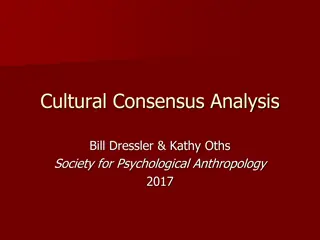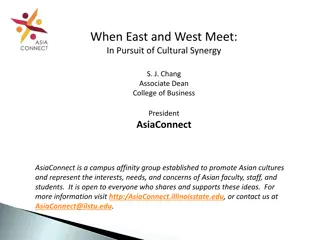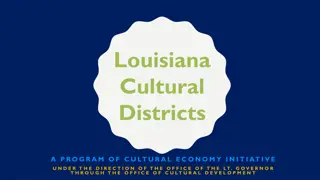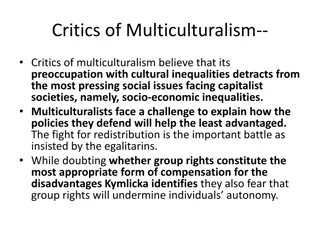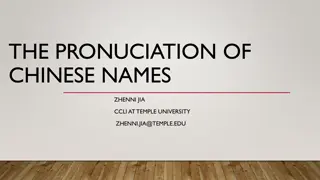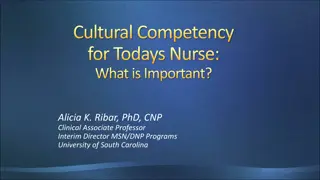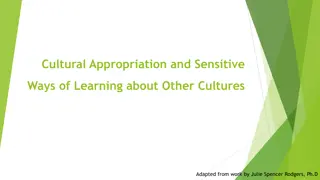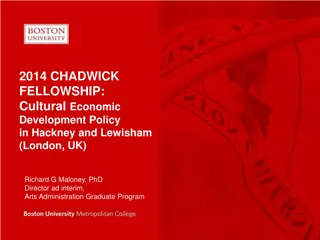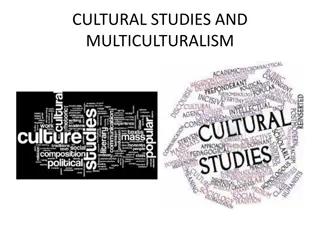Tex-Mex Origins and Social Significance: A Cultural Analysis
Tex-Mex cuisine originated in the border regions of the US in the early 20th century, combining Mexican and American flavors. It is a distinct food style with dishes like nachos and chili con carne. The label "Tex-Mex" has become a social category tied to specific expectations and practices within the culinary world. Various theories explain the emergence and significance of such categories, highlighting the cultural and historical roots of Tex-Mex food.
Download Presentation

Please find below an Image/Link to download the presentation.
The content on the website is provided AS IS for your information and personal use only. It may not be sold, licensed, or shared on other websites without obtaining consent from the author. Download presentation by click this link. If you encounter any issues during the download, it is possible that the publisher has removed the file from their server.
E N D
Presentation Transcript
Where did Tex-Mex come from? The divisive emergence of a social category RESEARCH IN ORGANIZATIONAL BEHAVIOR Vol. 37 Dennis Ray Wheaton and Glenn R. Carroll
What is Tex-Mex ? Food style that emerged & developed in US Southwest Combination plate Fajitas Fashioned from Mexican ingredients and flavors but not food from Mexico Examples: Nachos, chili con carne, cheese enchiladas Ingredients: Yellow cheese, cumin, corn chips, chili powder Chile con queso Frito pie
Tex-Mex as Social Category A social category is an institutionalized set of expectations associated with a label Many diners & others associate the Tex-Mex label with certain food items & service practices Tex-Mex category is taken-for- granted & does not typically require explanation For example, Steakhouse is a category for restaurants associated with certain food, d cor & service Tex-Mex label has diffused Organizations & cultural objects associated with a category receive rewards & punishments from audiences Association with a category implies taken-for-granted conformity with expectations unless a violation is obvious
Theories of Category Emergence Activist Theorization Similarity Clustering Social movement entrepreneurs advocate for a category (Rao et al. 2003) Theorization of category rationale and benefits Institutional logic of action and practices Domain enthusiasts see entities & group together on basis of similarities (Hannan et al. 2007) Side-by-side comparisons of objects by features Labeling Schematization
Tex-Mex Social History Mexican food combines indigenous traditions with ingredients & practices of Spain High regional variation of food in Mexico Mexican-American food emerged in the border regions of US in early 20th century Chili con carne sold at outdoor stands by chili queens of San Antonio Mass industrialized products & fast food chains e.g., El Chico, Chi Chi s, Fritos, Pace salsa
Tex-Mex Social History Called Mexican until Diana Kennedy argued that real Mexican food differed & higher quality Mexican government & some leaders concurred Tex-Mex became a label built on disparagement Tex-Mex emerged as a social category and its usage diffused, as did associated places & items Ethnic activists re-appropriated the label & enhanced its image Other immigrant foods did not typically develop new hybrid labels despite being adapted
Reconciliation with Theory Much Tex-Mex history does not conform to theories Timing of label emergence is too late Emerged without activists advocating it Emerged with strong negative connotations Shows no trace of clustering in authenticity valuations
Reconciliation with Theory Tex-Mex history suggests other factors behind emergence Ethnic dynamics and racism Mass industrialization Geographic agglomeration Geographic adjacency to origin place




